This tutorial is a companion to the forehand block vs loop – side view tutorial, but showing a front view perspective instead. Rather than repeat much of the side view version, I’ll just be pointing out items that are relevant to the front view.
Ready Position
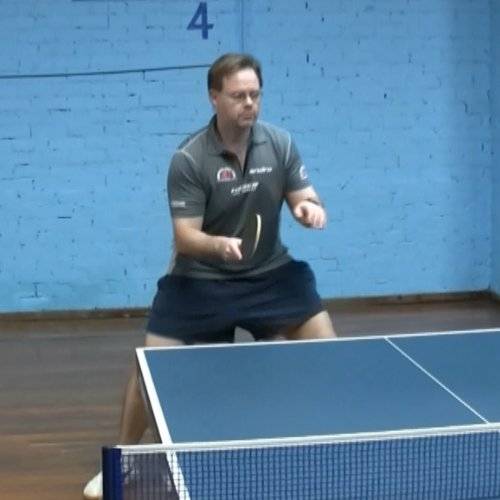
© Greg Letts
Points to look for:
- The player is standing over in his forehand court since he is practicing a diagonal forehand loop to forehand block drill, and his training partner has been consistently placing the ball near the left sideline of the table.
- The player is facing towards the direction the ball is coming from, with the tip of the racket pointing about a foot or so to the left of the current ball position, from the camera’s point of view. This puts the player in a standard neutral position, where he is able to play a forehand or backhand with equal ease.
- The racket angle is slightly tilted to the player’s left, since the player is expecting to play a forehand stroke. It would probably be better to have the racket edge pointing straight up and down, which would be equally suitable for forehand or backhand strokes.
- The player is watching his training partner play the ball, but he is not yet committing to any particular stroke.
Start Of Backswing
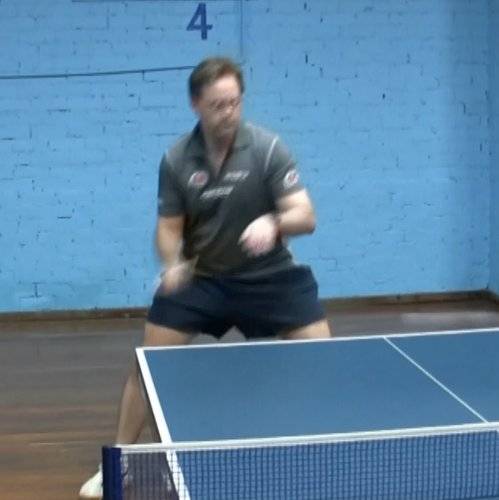
© Greg Letts
The ball is coming to the forehand side and the decision has been made to play a forehand block. The backswing begins the stroke.
Points to look for:
- The racket is being brought back into position by the turning of the shoulders, and to a lesser extent, the hips and waist.
- The player has judged that he is in a good position to play the oncoming ball, and as such he has not bothered to adjust his location, other than to slightly lean towards his right, putting a little more body weight on his right leg.
- Since the block stroke uses the opponent’s pace to help return the ball, there will not be a large backswing or shoulder turn. Even so, the player still uses some shoulder and waist turn to bring his racket back into position, instead of simply moving the racket back by moving his right arm from the shoulder.
End Of Backswing
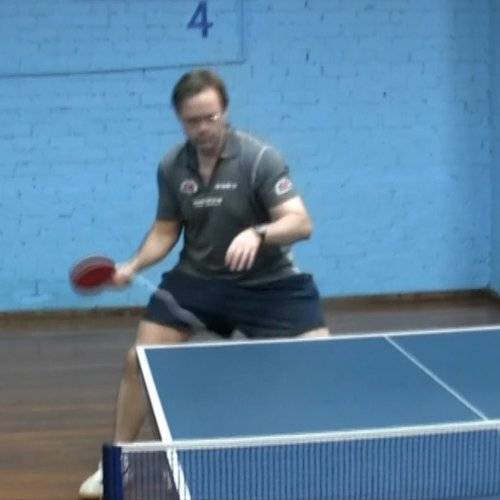
© Greg Letts
The backswing has finished, and the ball has almost reached the player.
Points to look for:
- The player has lowered his body a little by bending his knees, and has leaned a little forward from his waist. This has brought him to a comfortable height from which to play the ball.
- The free arm has not been moved, other than by the turning of the body. It is being used primarily as a balancing tool.
- The player has turned his head to watch the bounce of the ball.
- As mentioned in the previous step, the backswing is relatively small, with the racket being stopped in front of the right leg. Since there will be very little forward swing before making contact, the player has almost brought his bat back to the point of contact.
- Note that the tip of the racket head is pointing to the right side of the player. Since there is very little wrist snap required, there is no need to cock the wrist and point the racket tip downwards.
Contact With The Ball
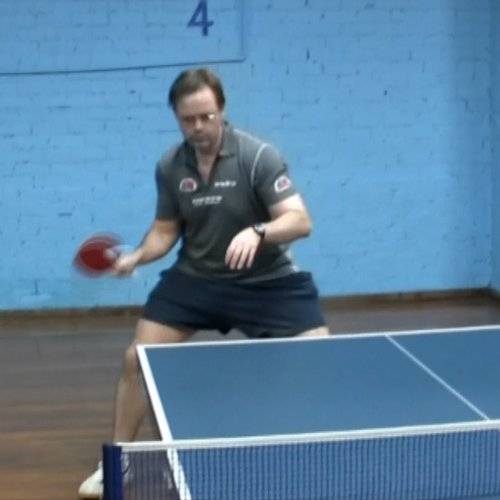
© Greg Letts
The player has made contact with the ball.
Points to look for:
- At the time of contact, the player’s body and head are essentially still, as shown by the lack of blurring in the photograph.
- There has been very little forward swing – only a few inches forward before making contact. The right forearm has been raised a few inches to bring the racket head into the path of the ball. Note the lack of movement of the right upper arm and elbow – highlighting the fact that the player is using the pace of the opponent’s stroke, rather than adding much speed of his own. If a bigger swing was used, the stroke would start to move closer to becoming a forehand counterhit.
- In this particular photograph, the player has not continued to turn his head to watch the contact with the ball, since his gaze is still looking forward at the rough location of the ball’s bounce. He is using his experience to anticipate the last foot and a half of the ball’s flight. This is not an uncommon shortcut used by some players, but it can lead to errors due to unexpected last moment changes in the flight of the ball.
Middle Of Follow Through
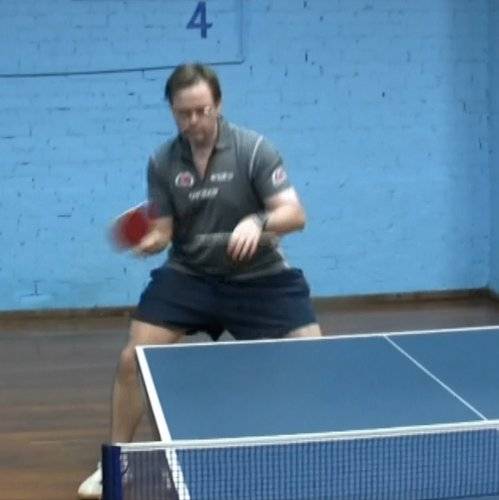
© Greg Letts
The ball has been struck, and the player is in the middle of his follow through.
Points to look for:
- The player is beginning to come out of the small crouch he was using, as well as straightening up his upper body.
- The racket has continued to slowly swing around the right elbow, while the right upper arm stays still, as does the rest of the upper body.
End Of Follow Through
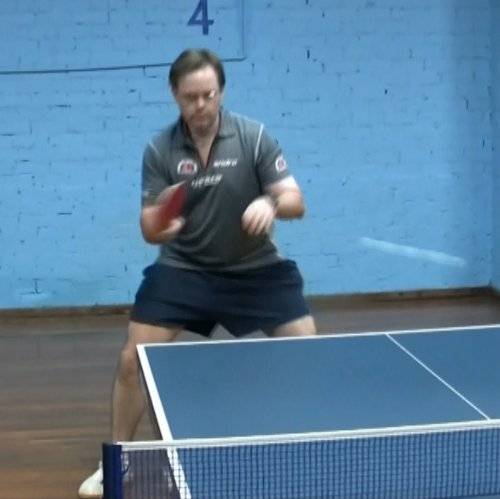
© Greg Letts
The forward swing has come to an end, and the ball is on its way.
Points to look for:
- The player is now turning his head to watch his opponent at the other end of the court, rather than the flight of the ball.
- The player is continuing to straighten up his body from the crouch, and is now starting to turn his upper body and waist back to his left.
- The ball’s blur trail indicates that it is moving quite quickly, even though the player used a very small swing. This highlights that the player has used the opponent’s pace to return the ball.
Return To Ready Position
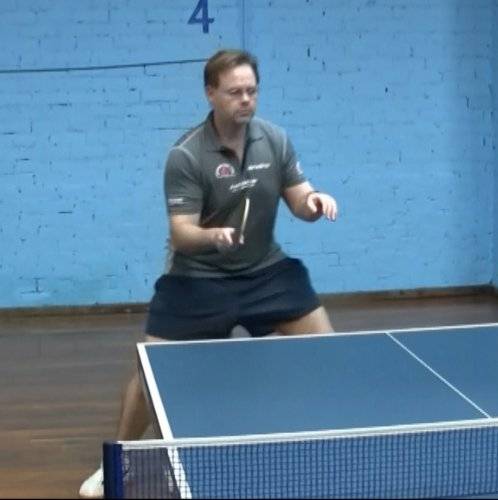
© Greg Letts
The player has returned to his ready position.
Points to look for:
- Since the forward swing was quite small, all that was needed to return to the ready position was for the player to continue turning his waist and shoulders to his left, which brought his arms back into their basic ready position.
- The player is now watching his opponent play the ball.
- His body weight is again evenly distributed between both legs, and he is on the balls of his feet.

